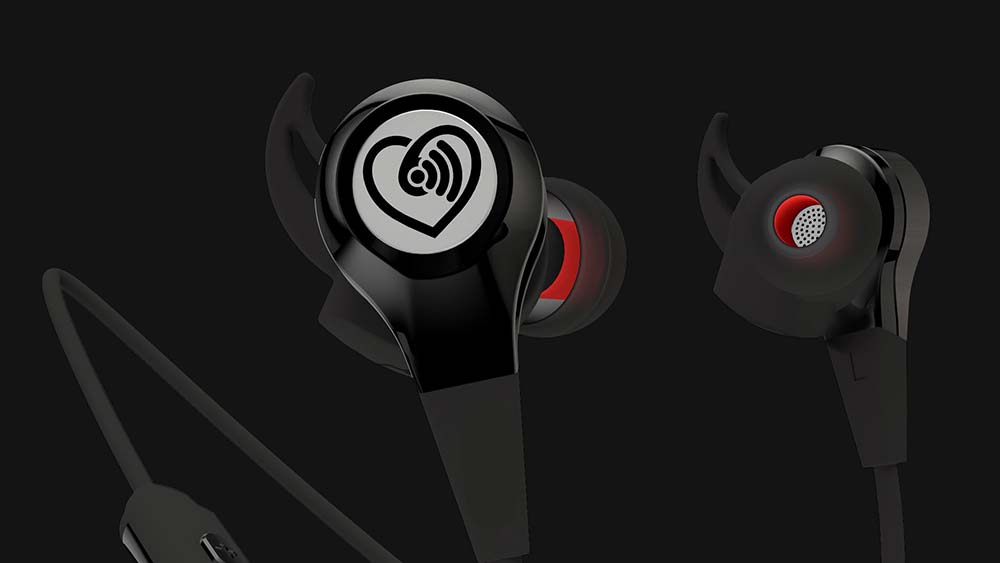
Everyone can use these tools to help take the guesswork out of health and fitness progress; especially for fat-burning, cardiovascular health and autonomic balance.
Remarkably, the total number of heartbeats each of us will have during our lifetimes is very similar. So it’s best not to waste them. Instead we should monitor them in order to gain better understanding of our health..
It’s no surprise that various aspects of heart rate (HR), measurements from the lowest resting state to maximum intensities, provide a variety of valuable information about health and fitness, that go far beyond monitoring exercise. While we think of its value during exercise, other non-exercise HR measures are also sources of biofeedback data that provides valuable information.
There’s an explosion of technology in the health and fitness arena. Trackers, smart watches phone apps and others enable us to measure many different metrics like step counts, miles and calories. Unfortunately, for most devices the emphasis is more on gaming and fashion than real useful information. Rather than gaining biofeedback information, these fad statistics collect irrelevant data, garbage in, garbage out, creating broad disillusionment and staggering abandonment rates among users — 75 percent within the first three months.
This may be tossing aside the most useful metric, heart rate.
Decades ago I developed a protocol for heart-monitor training called The MAF 180 Formula. This included aerobic threshold testing and the relationships between submax and max HR, as well as a system for testing called the MAF Test. and the MAF GPS Test. I also relied on non-exercise HR assessment in developing my formula.
Properly monitored, non-exercise HR reflects autonomic function, which is important for monitoring overall health, especially managing stress and the ability to burn more body fat, and fitness, in particular how well we physically perform during training and competition. This includes measuring improvements to not only the heart function but the whole cardiovascular system, metabolism and hormones, muscles, and the brain (the source of autonomic function).
Combining HR with other valuable tools that also monitor health and fitness, including lactate, stress hormones and heart rate variability, may be optimal, However, many people don’t use them. Because simple HR monitoring, the most commonly measured metric worldwide, reflects these other measures, especially autonomic stress, it still stands alone as one of most valuable single tools to use.
If you are looking to upgrade your HR Monitor, take a look at the new MAF HR+ Wireless Earbuds currently on sale and shipping globally with a 25% launch discount.
Here are three key non-training HR uses:
Resting HR
While it seems everyone talks about it, too few actually take it regularly. Monitoring resting HR (RHR) is one of the best personal baselines of health and fitness, and one vital test for everyone to evaluate regularly. Using a HR monitor rather than manual estimation gives the most accurate results.
First thing in the morning may be the lowest HR of your waking hours, so that’s a good time to obtain resting HR. In particular, lying down flat on your back is associated with the lowest morning resting rate. Simply put on your monitor, close your eyes and wait 30- or 60-seconds (if 30 you double the number) and read the result as beats-per-minute (bpm).
RHR is a simple autonomic marker for cardiac stress, and overall mortality, and it goes up and down with decreasing and increasing fitness, respectively. It’s not as accurate as a treadmill stress test, which most people won’t perform or need to, leaving RHR as a more available but still powerful reflection of health and fitness.
As noted, the total number of heartbeats per lifetime is quite constant, so those with a lower resting HR statistically live longer. An increase of the resting rate by 10 bpm, for example, increases all-cause mortality by 17 percent.
While it’s important to note that there is no “normal” resting rate, we can still consider the following health and fitness risk levels:
Lowest risk — RHR less than 70 bpm.
Moderate risk — RHR between 70 and 75.
Higher risk — RHR above 75.
- Low risk is best, and means it’s still worth monitoring with some regularity.
- Moderate risk would send up a yellow flag — ask why your risk elevated? And most importantly, how can you reduce it?
- High risk, of course, is a red flag. Your health practitioner should be aware of this, especially if your resting rate is 80 or above, where further testing and personalized care will be important.
In evaluating the RHR of 4,266 MAF app users, the average was 55. By comparison to other studies:
- Middle aged endurance athletes averaged 63; sedentary controls 79.
- Young adult elite handball athletes (whose training included running) averaged 67; sedentary controls averaged 84.
How does your RHR compare? We previously compared 5K race times between MAF athletes and others.
Improving health and fitness helps lower RHR over time. Acute stress, such as an infection, hard training session (even a healthy one), or a bad night’s sleep, can temporarily raise it, indicating the need for additional rest and recovery.
Exercise and relaxation, especially when eating healthy food to significantly support these activities, can improve body function and lower RHR; in particular:
- Endurance training is most effective.
- Relaxation techniques such as yoga, Tai chi, and Qigong are moderately effective.
- Strength training is less effective.
- Combinations can also be very effective.
The profound effect of endurance exercise on reducing RHR is, in part, associated with increased oxygen uptake. For the same reasons, living at lower altitudes lowers RHR due to higher oxygen uptake, with higher altitudes raising it. (Lying in a mild hyperbaric chamber, pressurized at 4 psi can raise oxygen uptake by about 17 percent, with a sometimes dramatic and immediate reduction of resting HR — I’ve observed numerous athletes go into the low 30’s.)
Interestingly, in overtraining and burning out (nearly identical physiological conditions), the acute and moderate conditions will raise RHR, but chronic states reduce it abnormally to lower levels.
Moving from lying to sitting or standing changes RHR too.
Postural HRs
With the added gravitational stress and muscular activity, the HR increases when moving from lying to sitting, to standing. This can have general assessment value too. In particular, good autonomic function is associated with a modest ascending HR.
From lying to sitting it’s typical to observe about a seven-beat increase, with about 15 beats above lying when standing. Additional stress on the body, such as walking around, will increase these numbers, while a decrease in stress lowers them. Normal postural elevations are often associated with increased muscular energy used — calories burned — to maintain those positions, with autonomic function regulating it. (In the case of sitting at a desk versus standing at one, the latter increases the energy you burn by more than 300 calories! Just one reason to avoid sitting stress.)
HR Recovery
During physical activity, whether exercise, going shopping, or walking up a flight of stairs, the HR rises; and when you stop moving, the HR obvious should come back down quickly. This is easy to evaluate, especially following exercise when you are already monitoring your HR.
A delayed HR recovery (HRR) during the first minute after exercise is a powerful predictor of overall mortality, and impaired health and/or fitness.
Good HRR is associated with a better cardiovascular system and improved stress regulation, i.e., autonomic balance, in particular better parasympathetic function. As such, it can correlate with measures of heart rate variability.
A metric used in scientific studies, HRR is often measured the first minute after the cessation of physical exercise of varying types and intensities. It is influenced by exercise intensity, autonomic function, and the clearance of stress hormones and metabolites (such as lactate). Generally, a faster HRR is considered as to indicate a faster post-exercise recovery and a better aerobic fitness, and will correlate with the MAF Tests.
The HRR also reflects the onset of recovery. During an aerobic workout, for example, the cool down should begin this process. Twelve to 15 minutes or more before the end of exercise, cooling down means reducing intensity so the HR begins to diminish through this period. When you finally stop, the HR won’t go as far down as resting, but closer to where it was at the onset of the workout.
And how well your HR reduces over a one-minute period after exercise is easy to do. Two positions can be used for this: standing and lying:
- When you finish an aerobic workout, standing still for one minute should bring your HR down about an additional 10-12 beats or more in those who are fit and healthy. If this does not happen it could be that same red flag associated with resting HR, indicative of a moderate or high stress.
- Lying down after an aerobic workout should bring the HR down about 15-18 beats.
If testing both positions, it’s best to do so on different days but after the same type of workout for comparisons.
Heart rate is the most commonly used metric worldwide, first measured by ancient Greek physicians and scientists, then more accurately by a watch in the early 1700s. Today it’s an easy and powerful way to monitor health and fitness.
If you are looking for a new Heart Rate Monitor, check out the MAF HR+ Wireless Earbuds currently on sale and shipping globally with a 25% launch discount.
View MAF HR+








